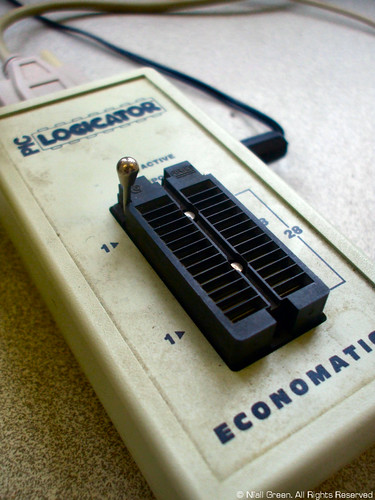I have completed the serial GLCD module stripboard edition. Firstly, I will say that all the oscillator problems were the fault of the breadboard as Hippy's ultra-fast serial testing program worked flawlessly at the speed which previously caused almost instant failure on the breadboard. Here are the pictures of the stripboard edition, which intentionally has the same footprint as the GLCD.
The solder side:

The trimmer pot is for adjustment of the contrast when using the GLCD's inverter instead of the on-board inverter. The inverter used is selected with a jumper on the other side.
The component side:

This side has an EEPROM socket which is currently unused and the on-board inverter which is covered with insulation tape to prevent it from shorting with anything on the back of the GLCD. The inverter selector jumper is just below the inverter. To connect the module to other things, I wanted to use terminal blocks but they were too tall and dodn't allow enough space for everything. A 10-way female header is used instead. Power and 0v have two connectors each to 'daisy-chain' it to another module (not that any others exist yet), serial in, busy out, execute in, reset. The last two connections are unused.
The completed thing:

The solder side:

The trimmer pot is for adjustment of the contrast when using the GLCD's inverter instead of the on-board inverter. The inverter used is selected with a jumper on the other side.
The component side:

This side has an EEPROM socket which is currently unused and the on-board inverter which is covered with insulation tape to prevent it from shorting with anything on the back of the GLCD. The inverter selector jumper is just below the inverter. To connect the module to other things, I wanted to use terminal blocks but they were too tall and dodn't allow enough space for everything. A 10-way female header is used instead. Power and 0v have two connectors each to 'daisy-chain' it to another module (not that any others exist yet), serial in, busy out, execute in, reset. The last two connections are unused.
The completed thing:





